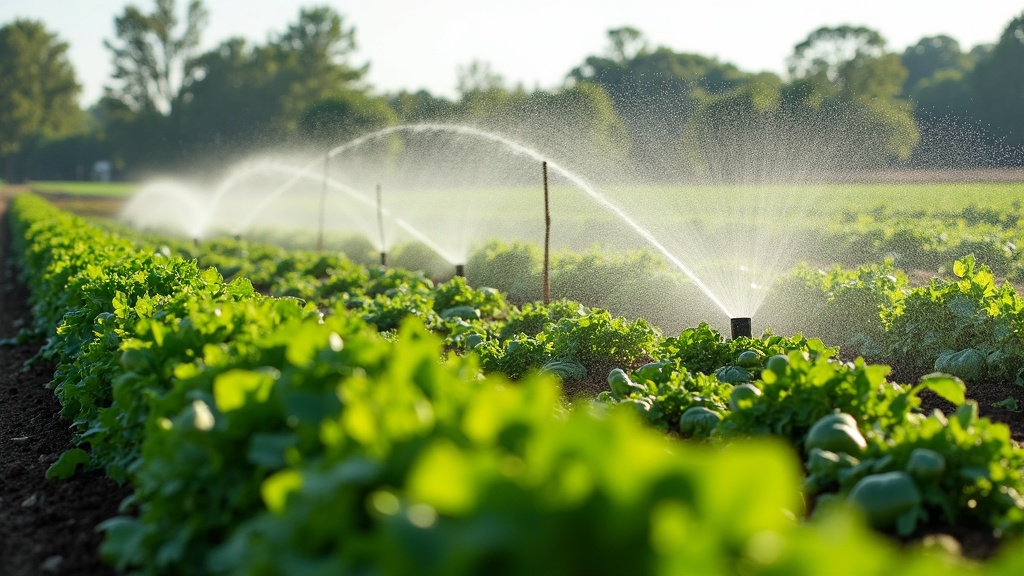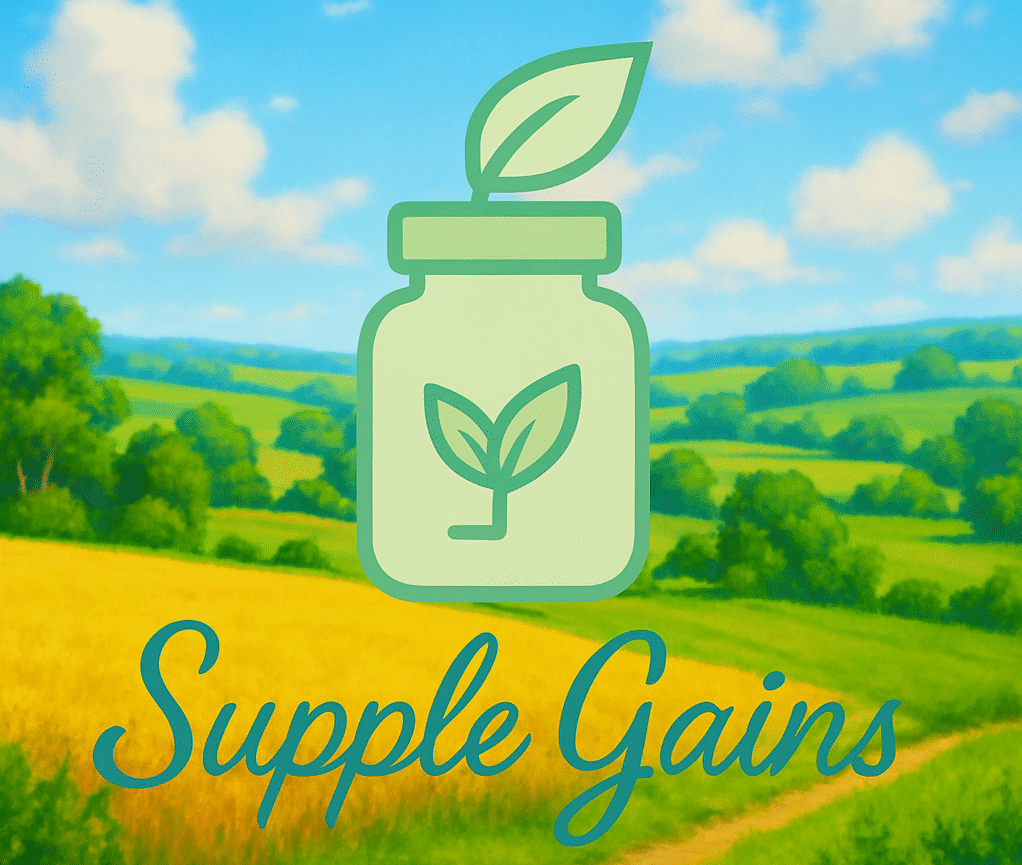Switching up what’s on your plate can actually have a pretty big influence on how much water you use, even if you’re not running the faucet extra or doing more laundry.
Eating more plantbased foods is one way I’ve found that really cuts down water use, and it’s surprisingly straightforward.
Plenty of people are starting to talk about water shortages, drought, and how everyday choices can add up, so changing what goes into your shopping basket is absolutely worth a closer look.

Why Water Usage Matters in Food Production
Every time I pour a glass of water, I’m pretty aware that the tap uses a set amount.
What’s less obvious is how much water goes into making the food I eat.
That’s what people call “virtual water,” the hidden water used to grow crops, raise animals, and process ingredients before anything reaches the grocery store.
It turns out, the actual water footprint of different foods varies a lot.
Animalbased foods such as beef, cheese, and chicken use way more water overall than most crops like grains, beans, and vegetables.
Some studies estimate that producing a single hamburger can use up to 660 gallons (about 2,500 liters) of water, while producing a plate of lentils comes in much lower, often less than 100 gallons for the same amount of protein.
That’s a pretty big difference.
The planet is dealing with more droughts, water scarcity, and unpredictable weather.
The United Nations often lists efficient water use as one of the key ways to safeguard freshwater for future generations and support cleaner, more sustainable food production.
So, it really makes sense to understand what’s hidden in the foods I grab at the store.
Understanding the Water Footprint of Animal Foods vs Plant Foods
Animalbased foods are usually way higher in water demand for a few reasons:
- Feed Crops: Animals like cows, pigs, and chickens eat large amounts of crops, and it takes water to grow all that feed first.
- Drinking Water: Livestock also drink water through their lives, which adds up across millions of animals.
- Processing: Meat and dairy processing often use additional water to prepare, clean, and package the products.
Plantbased foods, on the other hand, generally skip a lot of those extra steps.
You plant the crop, give it water, and harvest it.
Legumes, grains, fruits, and vegetables are a lot more direct, and that’s why their total water use per serving is much lower.
Almonds and rice do use more water than some other crops, but overall, plantbased eating uses far less water than eating mostly animal foods.
Getting Started With a PlantBased Diet to Save Water
Switching to a plantbased diet doesn’t have to mean saying goodbye to old favorites overnight.
For me, it started with swapping out a few dinners a week with veggieheavy recipes and working in more legumes and grains.
Here are a few easy ways to start:
- Meatless Mondays: Pick one day a week for all plantbased meals. It’s a good test run that doesn’t feel overwhelming.
- Try New Proteins: Beans, lentils, chickpeas, and tofu are low in water use and work in soups, salads, and wraps.
- Bulk Up on Whole Foods: Build meals around rice, pasta, potatoes, or quinoa and add your favorite veggies.
- Watch Dairy: Cheese and milk use more water than plantbased options like almond, oat, or soymilk. Swap occasionally to see what you like.
Not every switch is going to feel automatic, but once you find a few tasty recipes or reliable snacks, eating plantbased gets much easier, and your water footprint drops naturally.
Common Challenges and Tips to Make It Easier
- Getting the Protein Right: Plantbased doesn’t mean missing out on protein. Lentils, quinoa, beans, nuts, and seeds make it easy to meet daily needs. For example, I love making chili with beans or tossing chickpeas on salads for extra protein.
- Budget Friendly Options: Some plantbased meat substitutes are pricey, but plain beans, grains, and veggies are among the cheapest foods in the store. Shopping in bulk aisles can make meals even more affordable.
- Meal Planning: Planning out lunches and dinners for the week prevents scrambling for lastminute animalbased options. Batchcooked grains and beans are super handy for quick meals.
- Eating Out: Many restaurants offer plantbased options. Sometimes it’s just a matter of checking the menu ahead or asking for a swap, for example, ordering a veggie burrito with beans and skipping cheese and sour cream.
Getting Enough Nutrients
Some worry that a plantforward diet might leave out essentials like iron, calcium, or B12.
Iron is easy to find in lentils, spinach, and beans (and absorbs better with a bit of vitamin C, such as tomatoes or peppers). Calcium is present in leafy greens, fortified drinks, and tofu.
B12 needs a bit more attention, so sometimes a supplement or fortified foods help round things out.
Taste and Texture Issues
Trying new flavors and textures can take some patience, but finding recipes from different cuisines is pretty fun.
I’ve found that Indian, Mediterranean, and Asian cuisines are already packed with plantbased dishes that are flavorful and satisfying right from the start.
Experimenting with different spices and cooking styles can make any meal more exciting, and browsing online food blogs or cookbooks often leads to discovering surprising favorites, too.
How Small Changes Add Up for Big Water Savings
Cutting back on animal foods even by a little makes a real difference for water conservation.
Some research from Water Calculator shows that trading out a single pound of beef for a pound of pulses (like lentils) can save thousands of gallons of water.
Making plantbased swaps once in a while, not even going totally vegan, still adds up over the weeks and months.
Restaurants, grocery chains, and even school cafeterias are picking up on this switch because more people want food that’s healthier and lighter on resources.
Many big-name brands offer clear labels for plantbased products, and apps like Eat Low Carbon break down the overall environmental impact of different foods.
If you’re curious about your own habits, there are simple calculators that let you track down your own water or carbon footprint, so you can see firsthand how little steps lead to bigger change.
Examples of WaterSmart PlantBased Meals
I find making waterfriendly meals is mostly about sticking to simple recipes using beans, grains, and veggies. Here are some of my go-tos:
- Stirfry with brown rice, broccoli, tofu, and lots of colorful veggies
- Lentil tacos, swapping out ground meat for spiced lentils and topping with salsa
- Chickpea salad sandwiches with lemon and fresh greens
- Veggie chili with three different beans and lots of tomatoes
- Oats with almondmilk, chia seeds, fruit, and nuts for breakfast
These meals don’t just use less water. They’re often quicker to make and clean up, too.
Adding homemade hummus, roasted vegetables, and grain salads to your weekly meal rotation brings even more plantbased variety without extra fuss.
Try rolling up leftover veggies and beans into wraps for easy lunches, or blend a quick smoothie with spinach, berries, and almondmilk for an energizing snack.
Questions People Often Ask About PlantBased Eating and Water Savings
Question: Does going plantbased mean I need to give up all animal products?
Answer:
Not at all.
I’ve found that even just reducing the amount of meat and dairy I have each week makes a difference.
Flexitarian diets or parttime plantbased eating are both super effective in saving water.
Question: Are all plant foods low in water usage?
Answer:
Most plant foods are much lower in water use than animal foods, but crops like almonds and rice take more water than others (lentils, peas, potatoes, etc.).
Swapping in more beans and root veggies is one easy way to cut your food’s water footprint.
Question: What if I can’t afford expensive “vegan” foods?
Answer:
The best part is that the cheapest foods at the store (beans, grains, and inseason produce) are also the lowest in water use.
You can skip the premium burgers and milks and stick to the basics for water savings and lower grocery bills.
Question: Will plantbased meals keep me full enough?
Answer:
Meals built with beans, lentils, whole grains, and seeds are really filling thanks to fiber and slowdigesting carbs.
With the right balance, plantbased food keeps me full for hours.
If you’re new to these meals, start by adding nuts or avocado for extra calories and satisfaction.
Going Further: Inspiring Others and Tracking Impact
Switching even a few meals a week to plantbased isn’t just about saving water for yourself.
Sharing tips, new recipes, and your reasons for trying it can spark curiosity in others around you.
There are cool tools and calculators online to estimate your own water savings, and seeing those results helps keep the motivation going.
If you want to dig into this topic further, tracking not just water but also energy, land use, and greenhouse gas emissions adds another layer to understanding impact.
Groups like EWG, UN Water, and Water Calculator all provide great resources and easy-to-read guides.
With just a bit of planning, swapping in watersmart meals, and trying different recipes, making your diet more plantbased is a practical way to save water.
Plus, you get some tasty new dishes as a bonus.
Time to roll—every small change on your plate can make a difference, and your choices might just inspire someone else to try out plantbased living, too.
